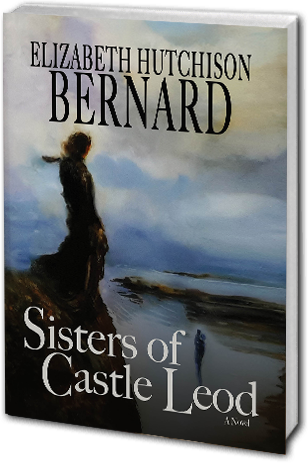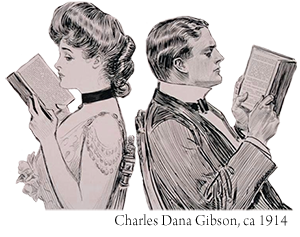Read Excerpts
From CHAPTER 1
The first hint of how far Constance and I were to grow apart came with a visit from the Night Watchman.
No one knows who he was, when exactly he lived, or how he died. And why he continues to haunt our castle. But sightings of the Night Watchman are mentioned in Mackenzie family records going back generations, making him as much a part of Castle Leod as the fifteenth-century tower keep, the dusty bones in the basement dungeon, or the carved marriage stone above the front entry.
My first encounter with him was on a winter’s eve well into my ninth year. Mama had said that if one were lucky enough for a glimpse, it would be at the stroke of midnight when he emerged from behind the old grandfather clock in the Great Hall. But children, unless expressly invited, were not allowed in the grandest of all the five-story castle rooms. Which is why I decided to take Constance with me. Should we be discovered, one of her silly grins would likely soothe Papa’s temper.
Like most four-year-olds, Constance was a sound sleeper, but, on that night, I awakened her without causing Nanny to stir. Both of us were barefoot and wearing only our flannel nightdresses when we tiptoed out of the nursery, closing the door softly behind us. In the hallway, I lit an oil lamp and then, after sneaking past Mama’s bedchamber, we descended the cold stone steps to the first floor and the Great Hall.

In winter, the huge fireplace at the east end, with its black-painted mantel-stone, kept the vast room scarcely warm. At this hour, there were no logs burning in the giant fire basket, only orange and blue embers and the musky odor of smoke from an earlier blaze. We crept past the scarlet wingback chairs, the velvet settees, the round gilt table with its base of white swans, the carved Jacobean chests. Every shadow cast by the flickering lamp in my hand made the somber portraits in the ancestral gallery along the south wall come alive. Suspicious eyes followed us. Stern lips curled into sinister smiles. I warned Constance not to look.
Fine Persian carpets covered the oak flooring of the Great Hall except at the west end, where the pendulum clock stood. There, the floor was bare and drafty, though I hardly noticed as I set the lamp on a small table and reduced the flame. The longcase clock was taller than I remembered and, in the dimness, more intimidating.
Constance pressed against me. “Sibell, I’m cold.”
I held her close, my eyes fixed on the clock’s dial. Four minutes to midnight. “He’ll be here soon.”
From CHAPTER 6
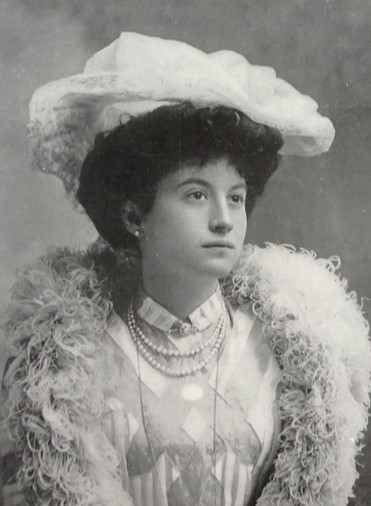
The Debutante
LONDON ST. JAMES’S GAZETTE, February 27, 1897: The first drawing-room of the present year took place on February 24th and was marked as a red-letter day in several respects. First of all, the drawing-room was held by the Queen in person. This is a most unusual event, so unusual in fact as to make it almost unique. Latterly, her most gracious majesty has avoided this function as much as she could. The duty often falls upon the Princess of Wales although sometimes in a pinch one of the other princesses is “commanded” to do the honors.
Nowadays you observe that the run of debutantes presented consists of every upstart whose family has rigged up for itself a compound surname. For every two-penny-half-penny nobody who has made a little money in trade to fancy he confers a sort of patent of nobility upon himself and his offspring by inserting a hyphen between his surname and his middle name is simply grotesque. But instead of these nobodies with whom recent drawing-rooms have reeked, there were no end of real swells at this one.
The most interesting of all the presentations was that of the youthful Sibell Mackenzie Leveson-Gower, Countess of Cromartie. This peeress in her own right is just eighteen and, like all the Leveson-Gowers, very sweet and pretty. She is the niece of the present Duke of Sutherland, being the elder daughter of his only brother, the late Earl of Cromartie. When Lord Cromartie died of pleurisy in the autumn of 1893, his titles formally fell into abeyance. But the Queen terminated the abeyance in favor of the petite Lady Sibell, making her among very few ever to become a peeress in her own right, by inheritance rather than marriage, and one of the richest landowners in Scotland.
Now here is a chance for some enterprising gentleman with plenty of money. Although his marriage with the countess could not confer any title upon himself, he would have the satisfaction of knowing that he might become the father of an earl. It is well worth considering, anyway.
***
My official introduction to society could not help but create fertile ground for gossip. Suddenly, everyone had access to an agglomeration of useless information about me. And what they didn’t know, they were not at all reluctant to invent. Within a few months, newspapers reported that I had turned down more marriage proposals than any lady in England.
Such accounts, though highly exaggerated, had the effect of encouraging even greater legions of eager suitors to test their tenacity, each more confident of his irresistible charm than the last. I found most of them tedious and, as time went on, the search for a husband felt more and more like an imposition. My life became a succession of tea parties, polo matches, and races at Royal Ascot, lavish dinners, theater events, and grand balls, followed by suppers that started at midnight. I tried to act as if there could be no more appealing way to spend my time than in the company of those who enjoyed wasting theirs. I doubt I was convincing.
The routine was always the same. Before each fruitless encounter arranged through my chaperone Aunt Millicent, Duchess of Sutherland, I was primed with propaganda by well-meaning friends of the family. “Surely you’ll find the baron to be a most charming companion. And he has his own money.” “Between us, the earl is rumored to be a man of extraordinary physical attributes.” “My dear Sibell, it’s inconceivable you should settle for anything less than a duke!” How could I explain I was not like other young debutantes set on achieving the most boast-worthy match? I was too much of a romantic or, if not that, at least I hoped for someone who might share my distaste for languishing in the drawing rooms of London. How I ached for the wild moors and mountains of home!
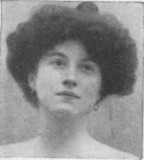
From CHAPTER 17
Past Meets Present
The count and Mama, their eyes glued to each other like long-lost lovers, began making their way through the crowd, no doubt assuming we were behind them. But neither the man I’d been invited to call Demetrius nor I had moved from where we stood.
“Lady Cromartie,” he said quietly, “I admire your choice of costume. We make somewhat of a pair, do we not?”
I steeled myself for a long night of small talk. I had hoped to let Mama do the socializing for both of us, but that was not to be. “I told the costume-maker I wished to come as an ancient Phoenician. She said a modern Indian would have to do.”
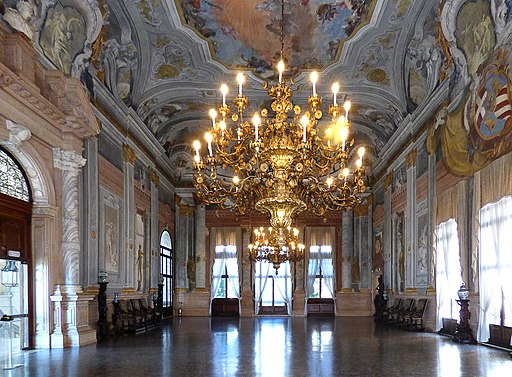
“Ha! Well, no one here would know the difference. To most Westerners, an Arab is the same as a Persian or an Indian. And the Phoenicians?” He gave a little snort. “A shame that one of the greatest civilizations in human history is largely forgotten. Rarely a topic of drawing room conversations, is it? None I have heard.”
From his comment, I gathered he was as bored by vacant chatter as was I. “You have a fondness for the Phoenicians?”
His lip curled slightly. “You might say that.”
“I’ve done some research about them myself. You see, I’m a writer—or I once aspired to be,” I added, reminding myself that nothing in my life was as it used to be. “I thought I might someday write a novel set in Tyre, just before the invasion of Alexander.”
There was a glint in his eyes, which I took as a sign that he found my idea compelling. “I could tell you many things about the ancient island port of Tyre. Things not in any of the books you have read. I used to study archeology,” he said, again with that enigmatic smile.
“But there aren’t many traces left of the Phoenicians, are there?”
“Lady Cromartie—” He raised a finger to his lips. “Hold your questions. I am happy to answer them all, but this is not the place. Allow me to take you for a moonlight ride along the winding canals of Venice, and you can ask me whatever you like about the Phoenicians. Yes?”
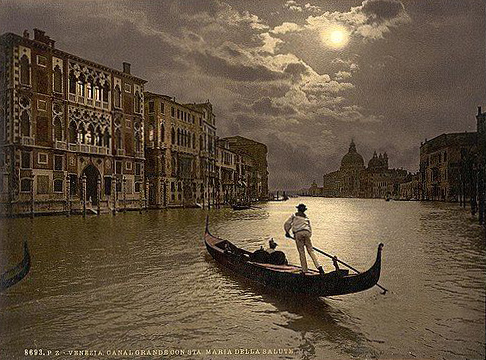
Beneath the veil, my cheeks warmed. He must have assumed I was unmarried. “You’re very kind, but I couldn’t. My mother has the expectation that I’m to be her companion for the evening.”
“Your mother seems more than content to be in the count’s company.” He gave me a sly wink. “Did you see the way he looked at her? Of course, one could not expect any man to resist a woman as beautiful as your mother. I doubt they’ll remain at the party too much longer.”
His insinuation was hardly subtle. “Count de Minerbi is a gracious host, but I’m sure he has duties besides seeing to my mother’s amusement.”
“Gracious he is, but Lionello always has time for what delights him. Please … forget your mother for a little while. Come with me, and I promise to take your mind off what troubles you.”
“What makes you think I’m troubled?” Did the veil do such a poor job of hiding my melancholy, even from a total stranger?
“We are all troubled, Lady Cromartie—by our struggle to know what is real and what is not.” His eyes locked with mine. “And why we must lose what we most love.”
TO READ ADDITIONAL EXCERPTS, CHECK EVENTS FOR FEATURED BLOG TOUR STOPS
